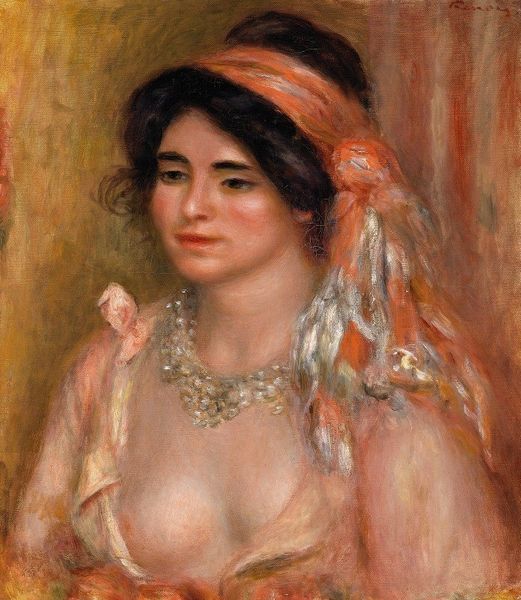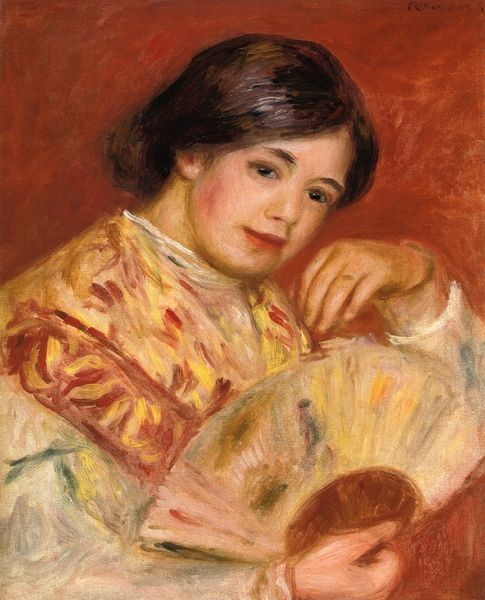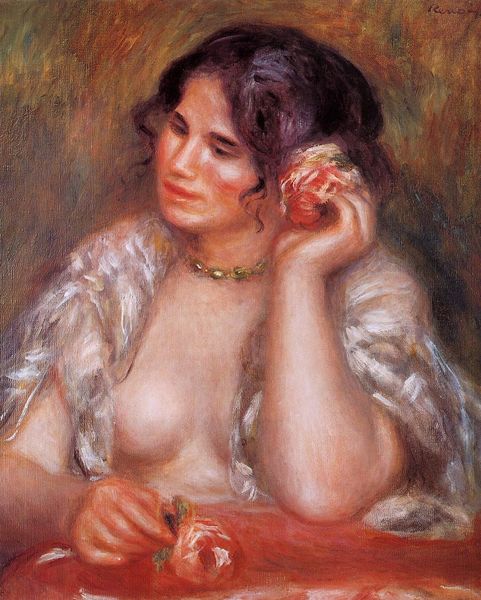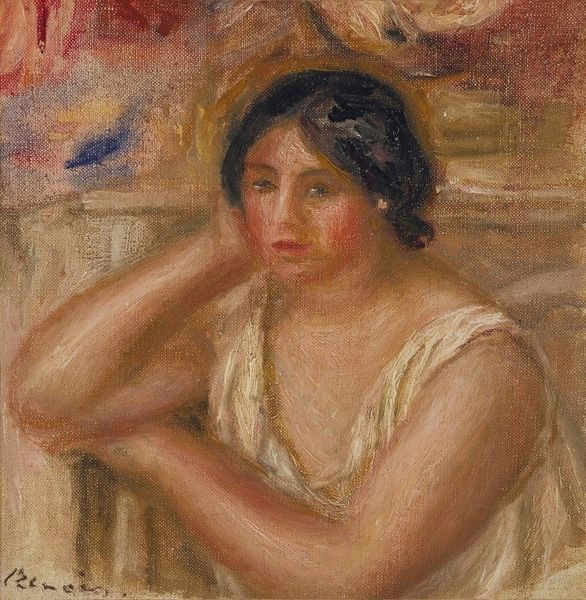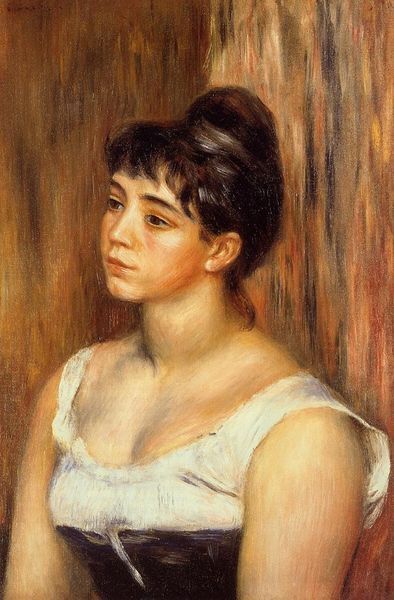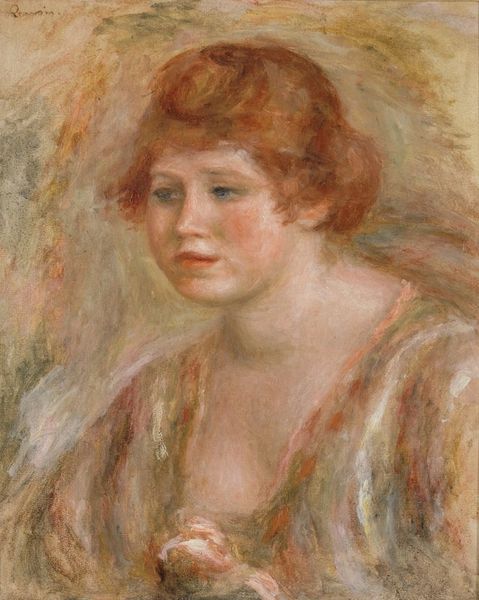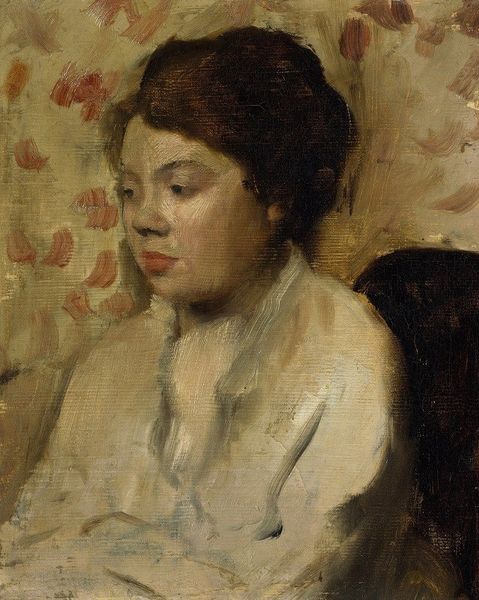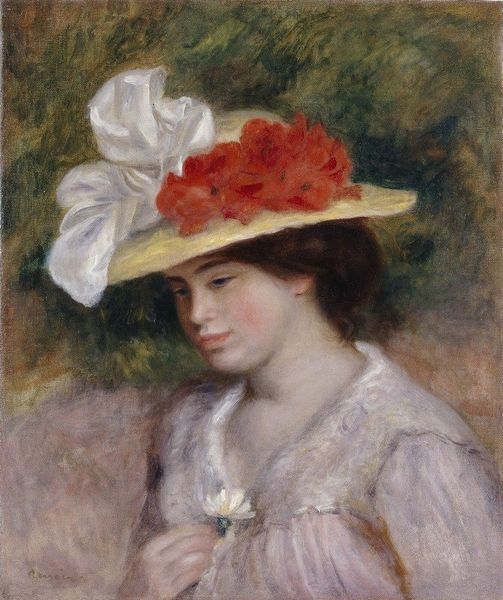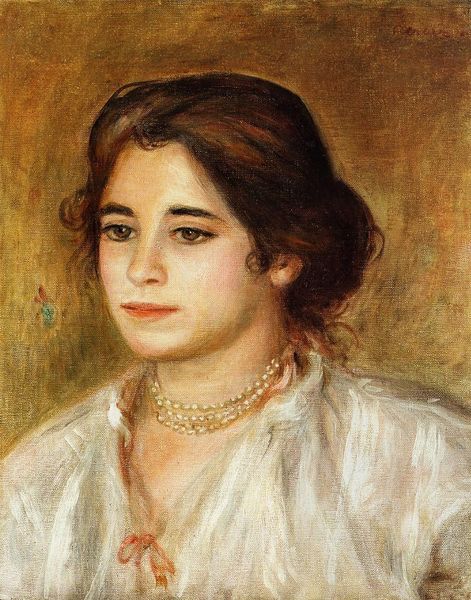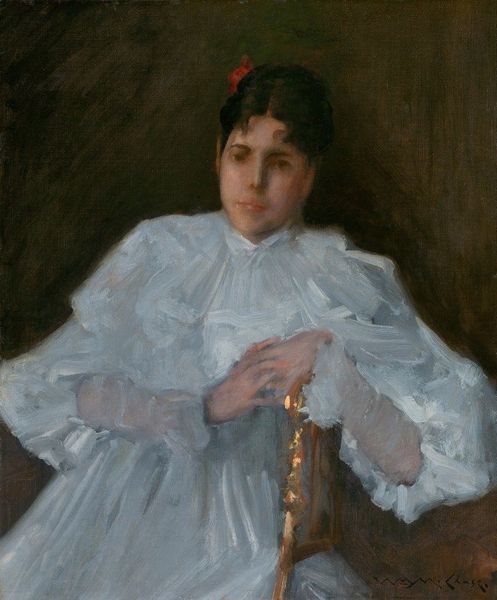
Copyright: Public domain
Curator: Looking at Renoir's "Woman with a Necklace," created around 1910, you get this instant feeling of serene intimacy. The canvas holds a portrait, oils on canvas I think, of a woman almost caught in a private moment, don't you think? Editor: Absolutely. Immediately, what strikes me is the passivity that’s portrayed; a stillness that reinforces this societal expectation of women occupying this space of docile beauty. Curator: See, that's interesting, I felt differently about the “docile beauty” - while the pose and subject are certainly beautiful, I’d actually read that expression as more self-possessed, self-contained. What do you think that says about beauty standards across movements like Impressionism or Post-Impressionism? Editor: The brushstrokes, the hazy edges, even the softness of the palette, seem to intentionally gloss over individuality. Consider the male gaze, the way women were largely positioned in these artworks—often nameless, reduced to ornamental roles. This artistic era perpetuated certain hegemonies by framing women primarily in relation to beauty. The woman's relationship with the jewelry takes prominence. The light draws attention to that as much as her face or expression, suggesting her connection to social values as she presents herself to be adorned in finery. Curator: Maybe...but doesn’t Renoir offer something a bit more intimate? To me, her expression looks pensive, rather introspective. It is a private moment for contemplation of self-worth through jewelry, not an overt display for external valuation from, say, an elite society? I sense something beyond simple ornamentation, you know? Maybe there’s an inherent defiance in being your own masterpiece for your viewing and assessment? The pearls aren’t loud. The colors, in their own quiet way, are very powerful. It's that post-impressionistic dream, I tell you. Editor: Perhaps… the context certainly complicates a straightforward interpretation. It requires grappling with what hasn’t changed, along with new emergent ways of representation and subjectivity. What do you think that the contemporary audiences can take from an engagement with a piece like this, then? Curator: For the viewer today, “Woman with a Necklace” presents an invitation. One that compels one to acknowledge a very deep history, a loaded context; whilst at the same time appreciating the subtle ways the art expresses itself through, in my opinion, inner strength in the artist's creation and subject. It feels so contemporary when I let go of old judgments. Editor: A balance, then. The painting encourages us to recognize past structures whilst inviting us to build our more progressive critical perspectives as active participants. That is something, at least.
Comments
No comments
Be the first to comment and join the conversation on the ultimate creative platform.

